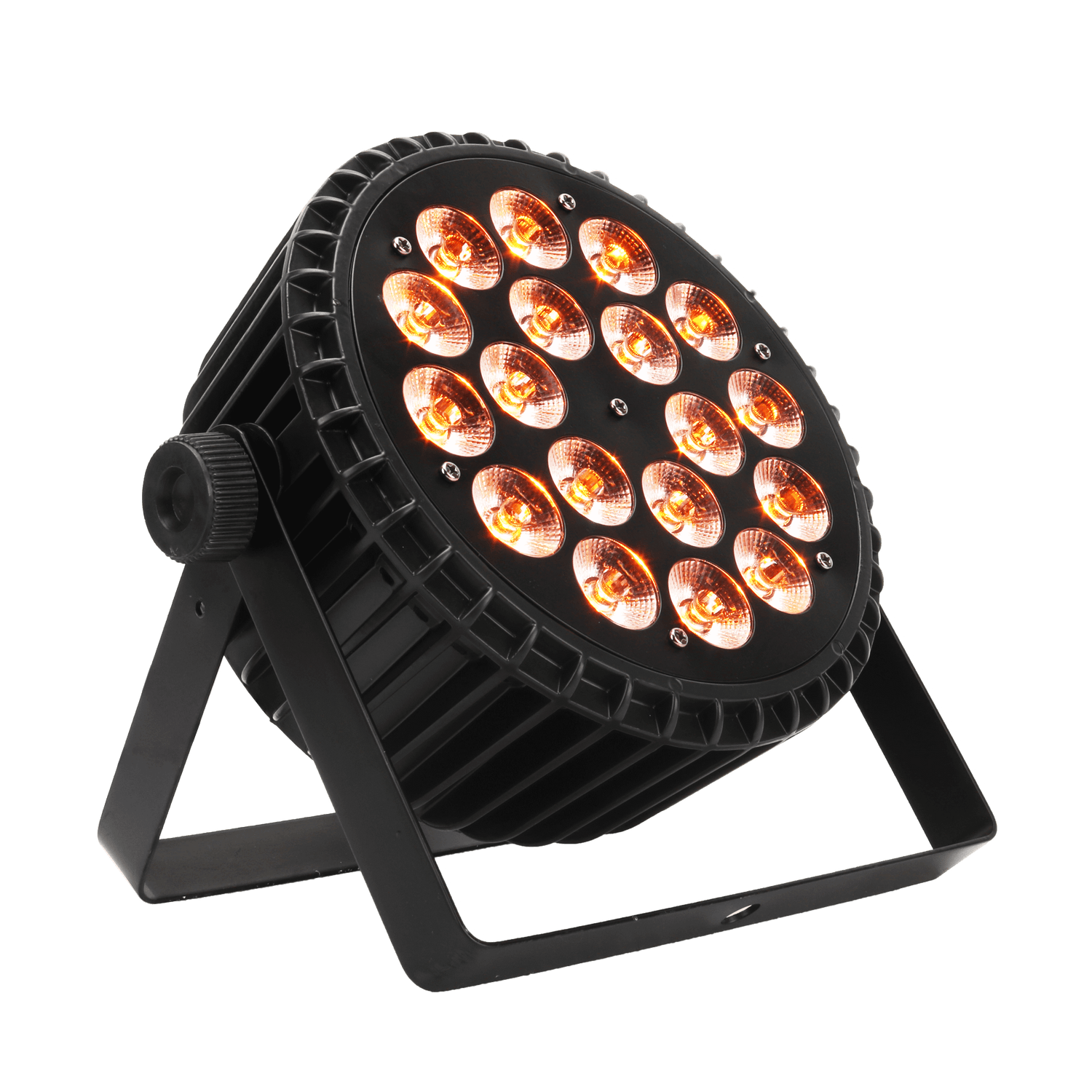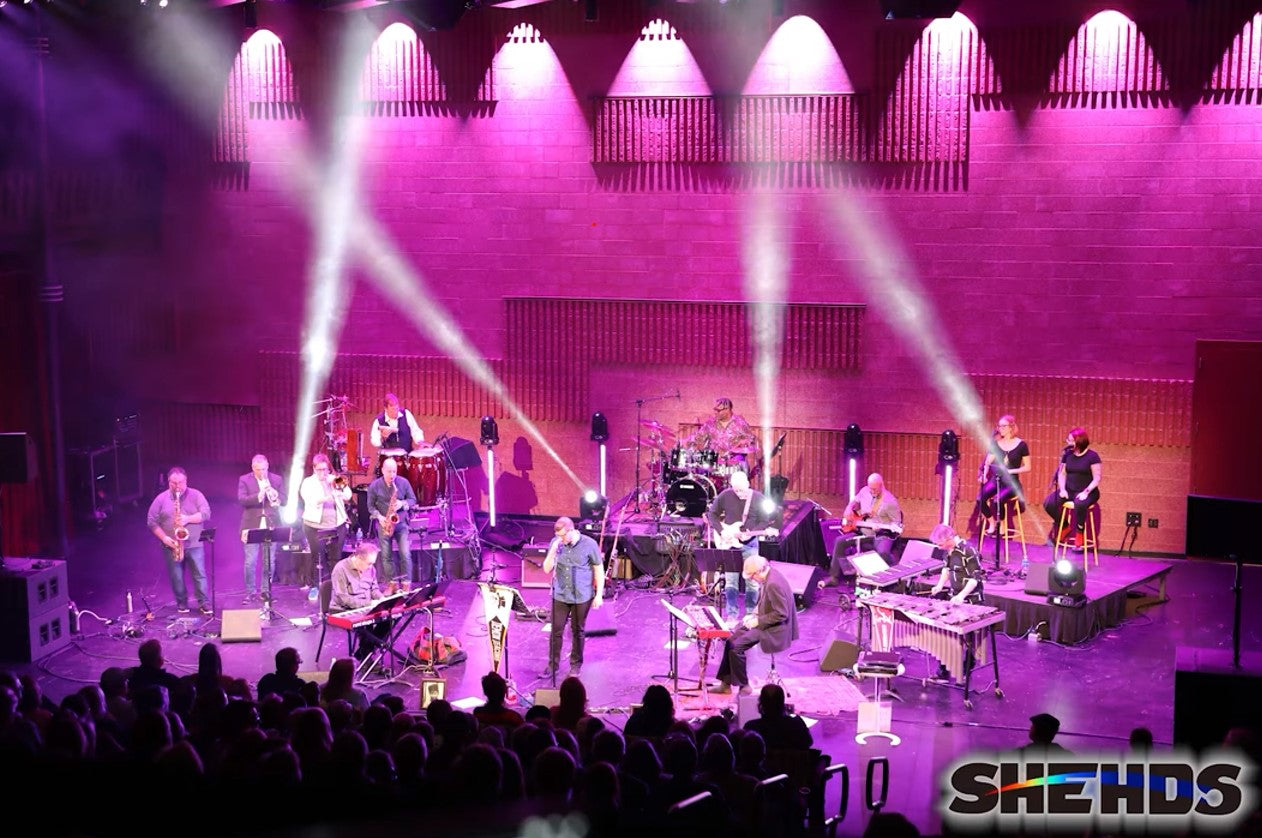Lighting professionals depend on Fresnel fixtures for their even coverage and easy control. The distinctive lens design allows soft light that blends smoothly with other sources. It’s an ideal choice for any setting that demands natural, consistent illumination.
We’ll explain what is a Fresnel light and how it’s used. You’ll also see why this timeless tool still stands out in today’s lighting industry.
What Is a Fresnel Light?
A Fresnel light is a type of spotlight that uses a special lens to create a soft-edged beam. It allows even lighting with adjustable intensity, making it popular in studios and stages.
The Fresnel lens was first designed for lighthouses to focus light over long distances. In stage and film lighting, it helps spread light smoothly across subjects or backgrounds.
Most Fresnel fixtures include barn doors—adjustable metal flaps that help shape and control light spill. This combination of focusability and beam control makes Fresnels incredibly versatile on set.
How Does a Fresnel Light Work?

Source: https://wp.optics.arizona.edu/oscoutreach/fresnel-lens/
Fresnel lights combine a concentric ring lens and a movable lamp. The lens focuses the light, while the adjustable lamp position changes the beam spread.
Here’s a simple breakdown:
| Setting | Description | Best Use |
| Spot | Narrow, strong beam | Highlighting subjects |
| Flood | Wide, soft light | Background lighting or ambient fill |
The control over beam spread helps lighting designers balance contrast and depth during live shows or recordings.
Advantages of Using Fresnel Lights
Beam Control: The spot-to-flood adjustment provides quick adaptability without changing fixtures. This saves time and reduces equipment needs on location.
Soft Edge Quality: The gradual falloff creates natural-looking light that blends well with other sources. Multiple fresnels can overlap without creating obvious boundaries.
Barn Door Compatibility: The flat front lens surface accepts barn doors easily. This allows precise shaping and flagging of the light beam.
Industry Standard: Rental houses stock Fresnels extensively. Crews familiar with these fixtures can work efficiently across different productions.
Durability: Simple mechanical construction means fewer points of failure. Well-maintained Fresnel fixtures can operate reliably for decades.
Types of Fresnel Lights

Tungsten Fresnels
Traditional tungsten models remain popular for their color rendering and dimming characteristics. These fixtures use incandescent lamps that produce warm, continuous-spectrum light.
Power ratings range from small 150-watt units to large 10,000-watt fixtures. Film sets often use 2K and 5K fresnels as workhorses for key lighting positions.
Dimming these lights affects color temperature, shifting warmer as intensity decreases. Experienced gaffers factor this characteristic into their lighting plans.
LED Fresnel Fixtures
Modern LED versions offer significant advantages in power consumption and heat output. Manufacturers now produce LED fresnels that replicate the classic beam characteristics with contemporary benefits.
The LED 250W LEKO Light provides RGBW color mixing with four-leaf manual cut light barriers. This fixture suits nightclubs, weddings, and theater productions that require color flexibility.
Color temperature adjustment solves the dimming problem of tungsten fixtures. LED fresnels can maintain consistent color while adjusting intensity.
Battery-powered LED options like the 6IN1 RGBAW+UV Par Light offer wireless control through smartphone apps. These versatile fixtures work well for mobile productions and event lighting.
HMI Fresnels
HMI (Hydrargyrum Medium-arc Iodide) fresnels produce daylight-balanced light with high efficiency. These fixtures are popular for matching natural sunlight in exterior and large interior shoots.
The arc lamp technology requires a ballast to regulate power. While more complex than tungsten units, HMI fresnels deliver significantly more light per watt.
Applications of Fresnel Lighting in Real Settings

Source: https://www.youtube.com/watch?v=gk7An8G_EL8
Fresnel lighting plays a vital role across many industries:
1. Theater and Performance Lighting: Used to create depth, highlight actors, and set the mood without sharp transitions.
2. Film and Broadcast Studios: Delivers even skin tones and balanced lighting across cameras.
3. Photography Studios: Controls light direction while keeping subjects naturally lit.
4. Live Events and Concerts: Combines with moving heads or PAR lights for layered lighting effects.
Fresnel lighting proves its worth in real-world applications daily. The fixture's adaptability across such varied settings demonstrates why it remains a professional standard decades after its introduction.
Comparing Fresnel Lights to Other Fixtures
Fresnel vs Open Face Lights
Open-face lights produce harder shadows and more defined edges. They're more efficient but offer less control over beam shape and quality.
Fresnels sacrifice some efficiency for superior beam control. The lens system absorbs light, but the improved quality justifies this trade-off for most applications.
Fresnel vs LED Panels
LED panels create soft, diffused light through different principles. They excel at broad, even illumination, but lack the focusing capability of fresnels.
Combining both types creates flexible lighting kits. Use panels for base fill and fresnels for controlled key lighting.
Fresnel vs Moving Head Lights
Modern moving head lights like the 275W 10R DJ Light offer remote positioning and effects. These fixtures suit dynamic stage productions and concerts.
Fresnels remain superior for static positions requiring precise beam control. Film and television productions often prefer the predictable, controllable output of traditional fresnels.
Choosing the Right Fresnel Light

Consider your primary application first. Theater work might benefit from tungsten fixtures, while event production could favor LED models.
Power requirements affect fixture selection. Smaller spaces work well with compact units, while large venues need higher-output fixtures.
Budget considerations include initial cost and operating expenses. LED fixtures cost more upfront but save on power consumption and lamp replacements over time.
The 19x15W RGBW Moving Head combines wash capabilities with zoom and DMX512 control. This professional fixture serves bars, stages, and performance venues that need flexible lighting.
How to Set Up Fresnel Lights Properly
Setting up a Fresnel light the right way helps you get balanced, professional-looking illumination. The goal is to control the beam, avoid glare, and highlight your subject evenly.
Whether you’re working on stage, in a studio, or at an event, positioning and adjustment make all the difference.
Follow these key steps for the best results:
- Mount securely: Place the Fresnel light on a stable stand or rig, slightly above the subject’s eye level.
- Connect power and DMX: Use a DMX system for control. Models like the LED 250W LEKO Light make setup quick and flexible.
- Adjust focus: Shift between spot and flood modes depending on your lighting needs.
- Control spill: Add barn doors to direct the beam and avoid light leaks.
-
Match colors: Keep color temperature consistent with other fixtures, such as the GalaxyJet LED 12x40W RGBW Lighting.
A properly positioned Fresnel light creates smooth shadows and even brightness across the frame.
Take time to fine-tune angles and distances before filming or performance. Once adjusted, your lighting will look natural and polished from every viewpoint.
Common Mistakes to Avoid
When using Fresnel lighting, avoid:
- Placing the light too close to subjects causes glare
- Ignoring focus adjustments leads to uneven coverage
-
Mixing unmatched color temperatures affects tone balance
Combining Fresnel units with Par Lights helps maintain consistent color quality across your lighting setup.
Closing Words
Understanding what a Fresnel light is opens up creative possibilities in film, theater, and photography. These versatile fixtures have earned their place in professional lighting through decades of proven performance.
Looking to refine your studio or stage lighting? Discover SHEHDS stage lights— built for clarity, flexibility, and performance. Our team can guide you in choosing the right setup for your production needs. Get in touch and start creating with better light.
FAQs About Fresnel Lights
1. What is a Fresnel light in simple terms?
It’s a spotlight with a special lens that produces soft, even light with adjustable focus.
2. What are Fresnel lights used for in film and theater?
They’re used to control lighting focus and blend scenes without harsh shadows.
3. Is a Fresnel light the same as a spotlight?
Not exactly. A Fresnel light has a soft edge and adjustable beam, while a spotlight gives a hard-edged, focused beam.
4. Can I use LED Fresnel lights for photography?
Yes, you can use LED Fresnel lights for photography. LED Fresnels provide stable color temperature and gentle light, ideal for portraits.
5. Are Fresnel lights suitable for outdoor events?
Yes, Fresnel lights are suitable for outdoor events, especially when paired with waterproof LED fixtures for wider coverage.









